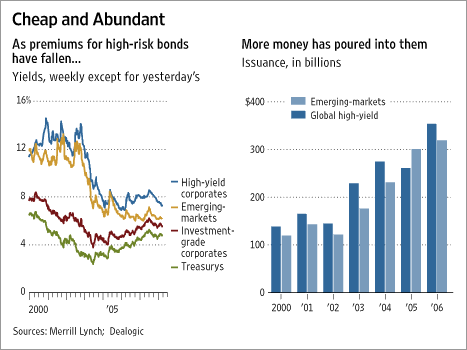
Credit risk is usually measured against a baseline interest rate. For example, the US Treasury market is considered the safest fixed-income investment. Therefore, the yield of other fixed income investments is compared to US Treasuries. The difference between the yields is called the spread, and it is measure of the amount of risk in the markets.
Notice how high-yield US corporates (junk bonds) were trading about 500 basis points above US Treasuries at the end of the last expansion in 2000. Now that spread is far less. This indicates investors are far more willing to buy higher-yielding junk debt. Now, it's important to remember default rates on high-yield debt are at very low levels right now, so investors may be making a prudent decision. However, this tightening of spreads indicates people are far more comfortable with higher-risk assets.
This in turn makes borrowing far cheaper for higher-risk entities. Compare the 2000 interest rates of roughly 12% with the roughly 8% currently. That's 4% or 400 basis points cheaper. Companies with poorer credit can get very cheap financing right now. If investors start to shy away from risk, the cost of credit will increase, making borrowing more expensive, which in turn slows business expansion.
The exact same arguments could be made for developing countries debt which are also on the graph.